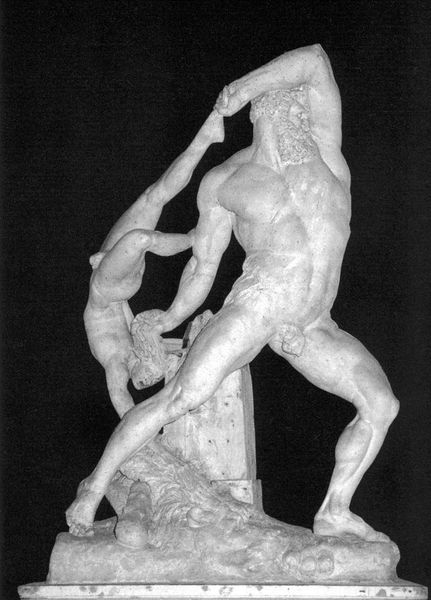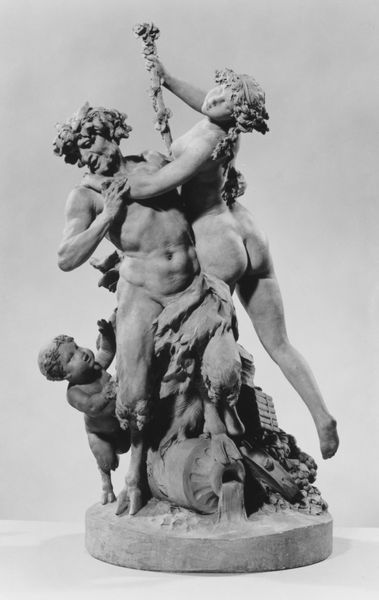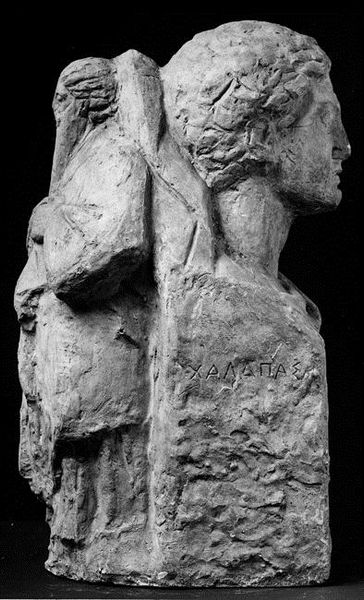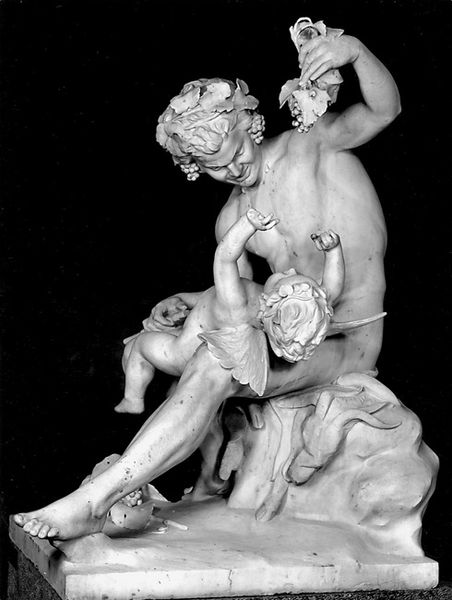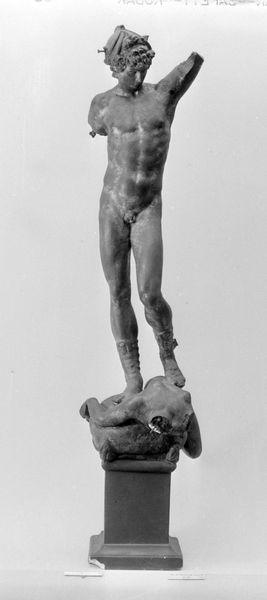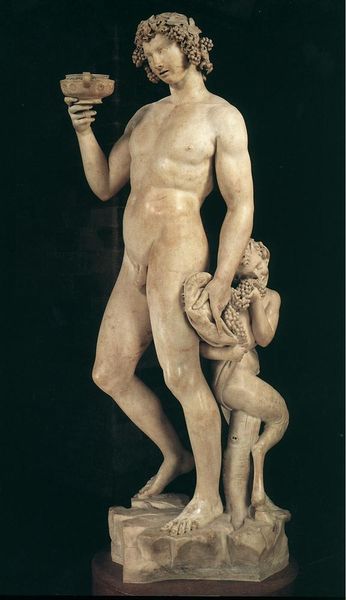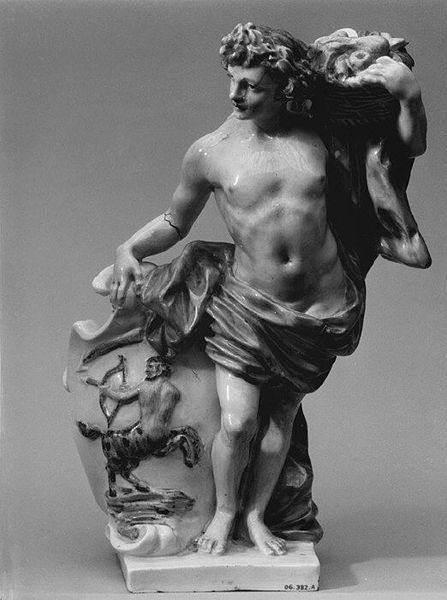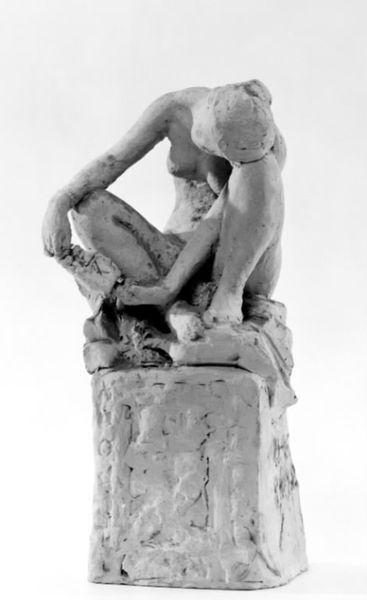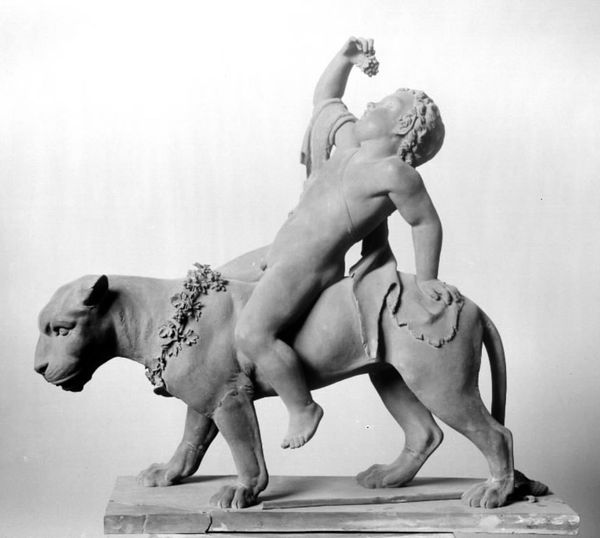
Left corner of a marble sarcophagus: Herakles and the Nemean Lion 2th century
0:00
0:00
carving, sculpture, marble
#
carving
#
sculpture
#
greek-and-roman-art
#
figuration
#
roman-art
#
ancient-mediterranean
#
sculpture
#
history-painting
#
marble
#
nude
#
male-nude
Dimensions: Overall: 22 1/2 x 18 1/2 x 3 1/2in. (57.2 x 47 x 8.9cm)
Copyright: Public Domain
Curator: This marble fragment, dating from the 2nd century, depicts a segment of a sarcophagus showing Herakles wrestling the Nemean Lion. It currently resides here at the Metropolitan Museum. What strikes you first? Editor: The raw physicality. It’s a brutal ballet rendered in stone. There’s something profoundly unsettling, yet undeniably compelling about the wrestling bodies crammed into this tight space. Curator: Indeed, the close composition enhances the struggle's intensity. Note how the lion claws at Herakles, whose grip appears less heroic and more…desperate? This departs somewhat from idealized portrayals. Editor: It makes it more human, doesn't it? These sarcophagi served as public displays but were also intimate testaments. Do you think such stark portrayals had an effect on, let’s say, the viewer’s sense of mortality? Curator: Certainly, that's something to consider. Remember, images of heroes offered Romans narratives to connect to, narratives dealing with death and legacy. A muscular hero grappling with mortality itself…that resonated, culturally and psychologically. The Nemean Lion itself, virtually invulnerable, embodies untamed nature and inevitable death, its vanquishing proof of overcoming and taming them. Editor: So it's not simply a story about strength, but the will to dominate and survive. Were these kinds of sarcophagi common among a specific class, socially? Curator: We believe they were commissioned by wealthy Romans, serving not only as burial containers but as statements of their cultural refinement and their association with mythic ideals. This particular piece highlights that very notion; a legacy set in stone. Editor: Ultimately, that’s what great symbolic imagery does; offers future generations insight and invites us to re-imagine these archetypal moments of existential struggle. Curator: Exactly. This small but powerful fragment provides a window into Roman culture and its complex engagement with heroism, mortality, and the enduring power of myth.
Comments
No comments
Be the first to comment and join the conversation on the ultimate creative platform.

